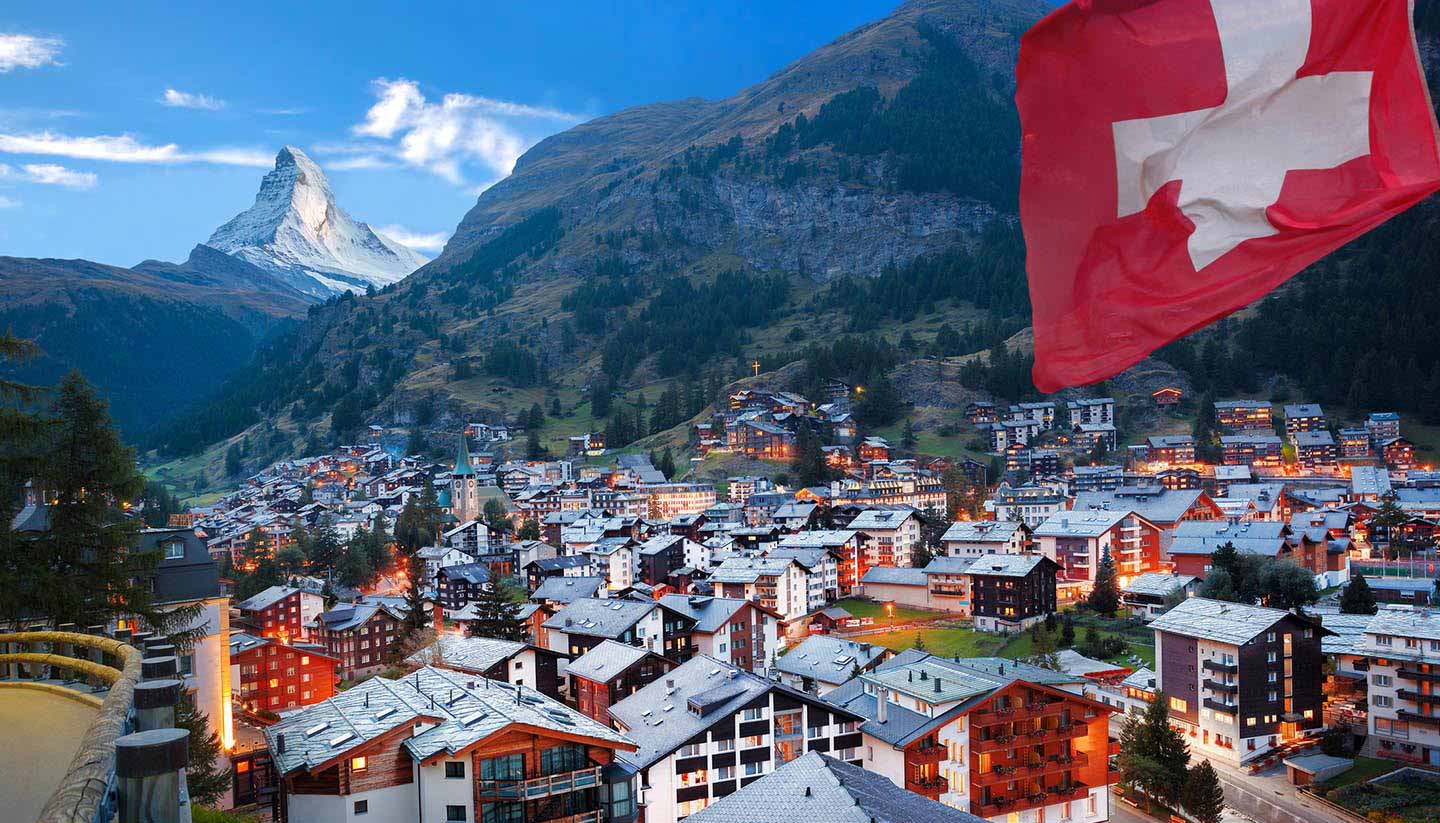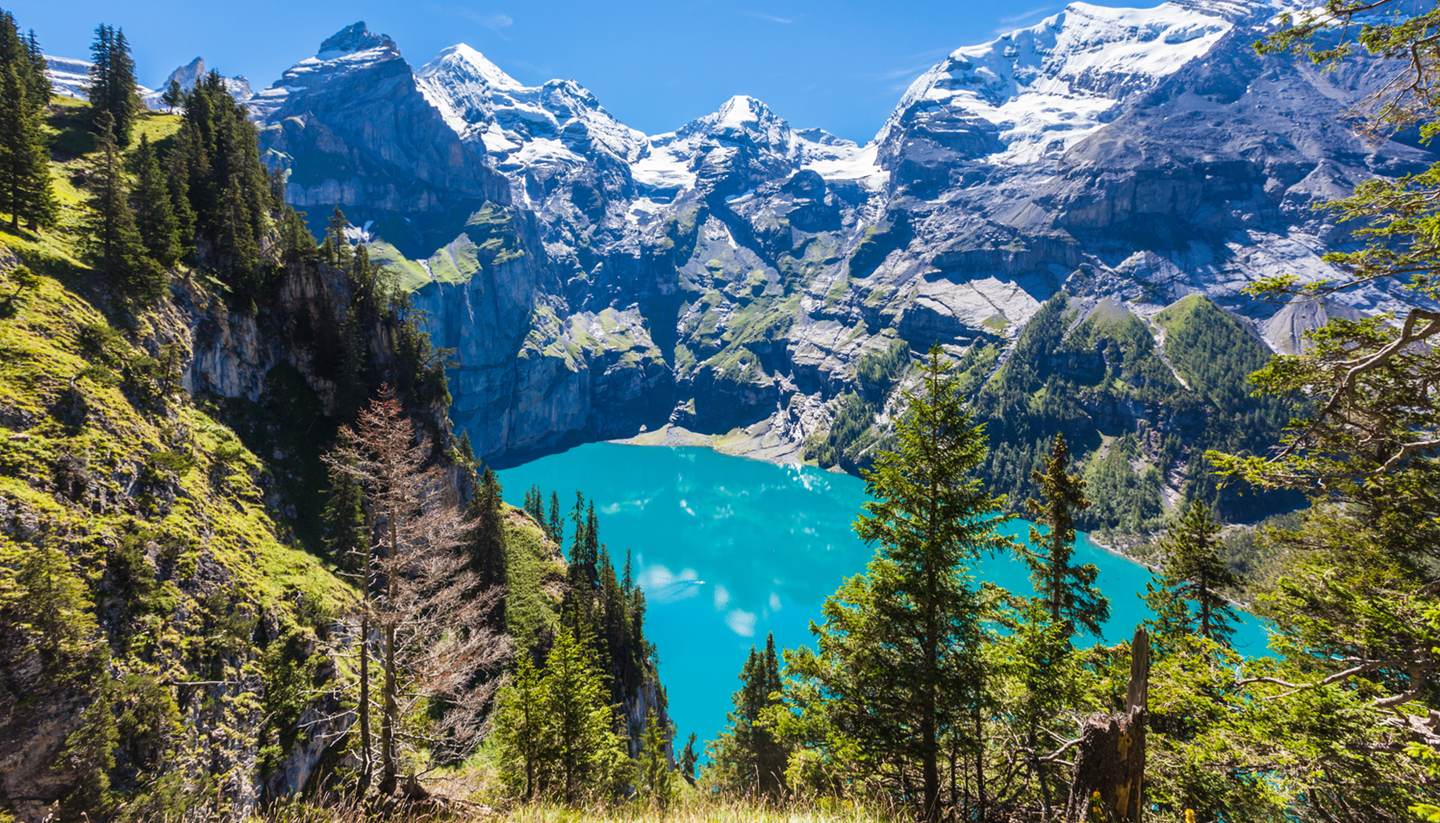Switzerland Weather, climate and geography
Weather and climate
Best time to visit
Famous for its alpine landscapes and snow sports, Switzerland enjoys a moderate climate year-round, with four distinct seasons. The higher altitudes of the Alps are significantly colder than the lower valleys. The North Atlantic Drift brings mild weather, while Arctic air influences can cause fluctuating temperatures and varying precipitation patterns. That said, Switzerland's climate is generally neither excessively humid nor extreme in heat or cold. Higher altitudes receive more precipitation, whether as rain in the warmer months or snow in the winter.
Winter (December to February) is the peak season for ski enthusiasts, particularly in the Alps. Temperatures during this period range from lows of -2°C (28°F) to highs of 7°C (45°F). Meanwhile, spring (March to May), summer (June to August), and autumn (September to November) bring warmer, more clement conditions. Sunny days are ideal for outdoor activities like hiking, biking, and boating, and in summer, temperatures can even exceed 30°C (86°F).
Zurich, in the north, is Switzerland's largest city and has a temperate climate. Winters typically require thick jackets and scarves, with average temperatures below 5°C (41°F). Rainfall occurs throughout the year, with April and May being particularly rainy and June seeing occasional thunderstorms. However, Zurich's vibrant art scene and nightlife make indoor activities just as appealing during cooler months.
Geneva, near the French border, has a slightly milder climate. Winters average around 10°C (50°F), while summer temperatures hover at a comfortable 23°C (73°F), making it a year-round destination. Visitors can explore the famous Jet d'Eau fountain or stroll through the charming old town with views of the Jura Mountains.
The southern region of Ticino, which borders Italy, has a Mediterranean influence, offering sunnier and warmer weather than the rest of Switzerland. With far fewer cloudy days and clear skies year-round, the area is sometimes referred to as the "Tuscany of Switzerland". Mendrisio, in southern Ticino, is a popular destination for its lush landscapes and warm climate, perfect for enjoying Swiss greenery with a Mediterranean flair.
In Bern, Switzerland's capital, the weather reflects the country's temperate climate. Summers are the wettest months, so pack an umbrella. Winters often see temperatures dip near 0°C (32°F), making warm clothing essential, particularly for those venturing into nearby mountain areas or the skiing paradise of the Bernese Oberland. Despite the seasonal variations, Bern's historic charm and blend of cultural and outdoor attractions make it a great year-round destination.
Required clothing
In winter, pack warm clothing and rainwear. If you plan to hike in the Alps, be sure to bring hiking boots, waterproof layers, hats, and coats to stay comfortable in the colder conditions. For summer, lightweight jackets and clothes are recommended, but don't forget an umbrella to be prepared for Switzerland's unpredictable weather.
Geography
Switzerland is a landlocked country in Central Europe, surrounded by France, Germany, Austria, Italy, and Liechtenstein. The country is divided into three distinct geographical regions: the Alps, the Central Plateau, and the Jura Mountains. The Alps, located in the south, dominate two-thirds of Switzerland and are its most iconic feature. This region is home to majestic peaks like the Matterhorn and Eiger, vast glaciers, and idyllic valleys. The Alps attract nature enthusiasts from around the world for activities such as hiking, skiing, and mountaineering. This mountainous region is also the source of several major European rivers, including the Rhine, Rhône, and Inn.
In the centre lies the Central Plateau, a relatively flat and densely populated area nestled between the Alps and the Jura Mountains. This region hosts Switzerland's largest cities, including Zurich, Geneva, and Bern, as well as fertile farmland and picturesque lakes like Lake Geneva and Lake Zurich. With its vibrant urban centres and tranquil countryside, the plateau serves as the economic and cultural hub of Switzerland.
To the northwest, the Jura Mountains form a smaller mountain range along the border with France. Known for its rolling hills, dense forests, and charming villages, the Jura is a popular destination for outdoor activities such as hiking and cross-country skiing. This region is also the birthplace of Switzerland's renowned watchmaking tradition.
Switzerland's elevation ranges from its highest point at Dufourspitze (Monte Rosa), towering at 4,634 metres (15,203 feet), to its lowest point at Lake Maggiore, at just 193 metres (633 feet). These elevation extremes contribute to the country's varied climate, from alpine cold in the mountains to a Mediterranean-like climate in southern regions such as Ticino.



